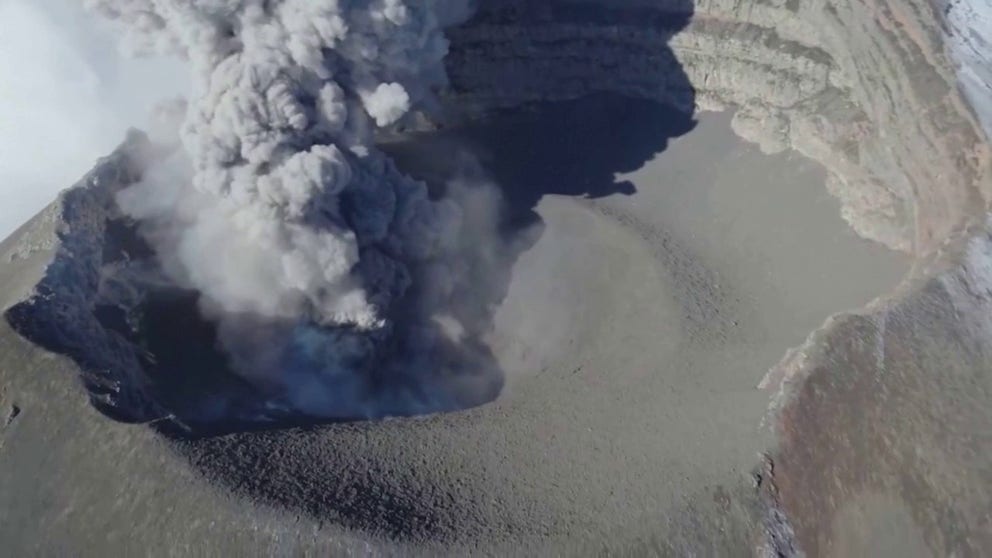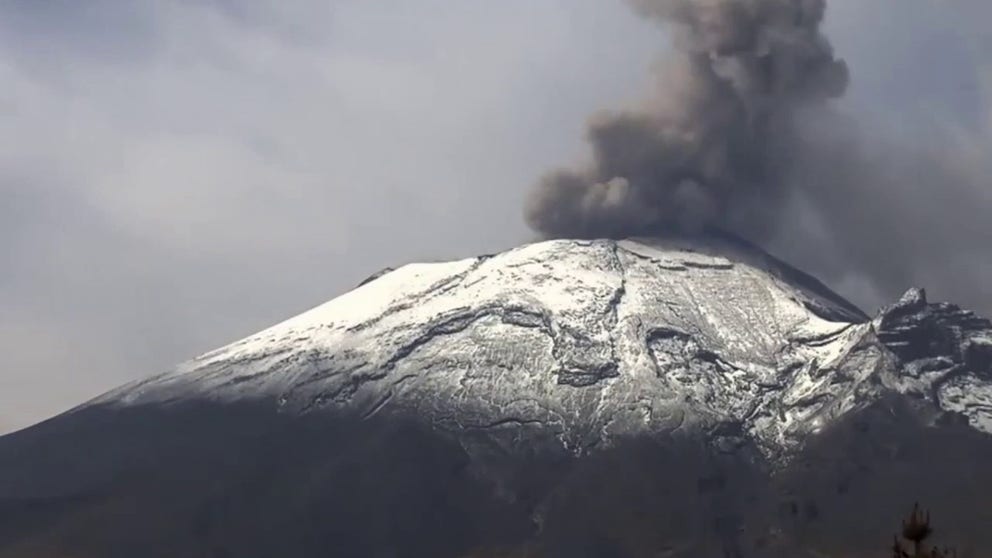Drone video shows Mexico’s Popocatepetl volcano spewing ash, gasses
Experts report the volcano has been extremely active since 1994. Alerts are in place for communities nearest to the base due to the continued explosions in the mountain.
Drone video of Mexico's most active volcano
Drone video shows Mexico’s Popocatepetl volcano spewing ash and gasses into nearby communities.
MEXICO CITY – Drone video taken near Mexico’s most active volcano continues to show ash and gasses spewing into the air, as millions of residents continue to watch for signs of a larger eruption.
The Popocatépetl volcano is located about 45 miles southeast of Mexico City, and its estimated roughly 25 million people live within a 60-mile radius of the volcano.
Volcanologists say Popocatépetl entered an active stage in 1994 and, ever since, has had episodes of spewing ash and rock during eruptions.
In mid-May, Mexico’s government reported schools were closed in nearby towns and operations at two large airports were shut down due to the risk of falling ash.
Around the same time period, government officials issued a yellow phase three alert, warning thousands for the potential of evacuations. Residents and visitors were also urged to stay away from the mountain due to the threat of falling rocks.
Ground-based cameras and satellites have captured scenes of explosions, and authorities have warned that clouds could reach as high as 30,000 feet.
VOLCANIC ASH PROMPTS TEMPORARY SHUTDOWN OF MEXICO CITY’S AIRPORT
Popocatépetl is a composite volcano, which are some of the most picturesque mountains in the world but can result in explosive events.
Mount St. Helens, Krakatoa, Mount Pinatubo and Hunga-Tonga-Hunga-Ha’apai are all considered to be composite volcanoes, which are also known as stratovolcanoes.
Experts are unsure when Popocatépetl’s activity levels will subside or whether a more significant explosive eruption is pending.
An eruption in 2000 caused authorities to evacuate thousands of residents as rocks and other volcanic debris were hurled miles away from the mountain.
Volcanic ash can create eye and respiratory irritations and lead to infrastructure damage.
The U.S. Geological Survey also considers the material to be extremely harmful to aircraft. Ash particles can damage a plane’s fuselage and blades, and greatly hinder an engine’s performance and electronics.
Mexico is no stranger to volcanic activity due to its location along the Pacific Ring of Fire. The country is home to dozens of volcanic mountains, with several that are considered to be active.
Popocatepetl volcano timelapse
The Popocatepetl volcano is located about 40 miles southeast of Mexico City, Mexico. Clouds of ash forced the temporary closure of the city’s main airport on Saturday.

